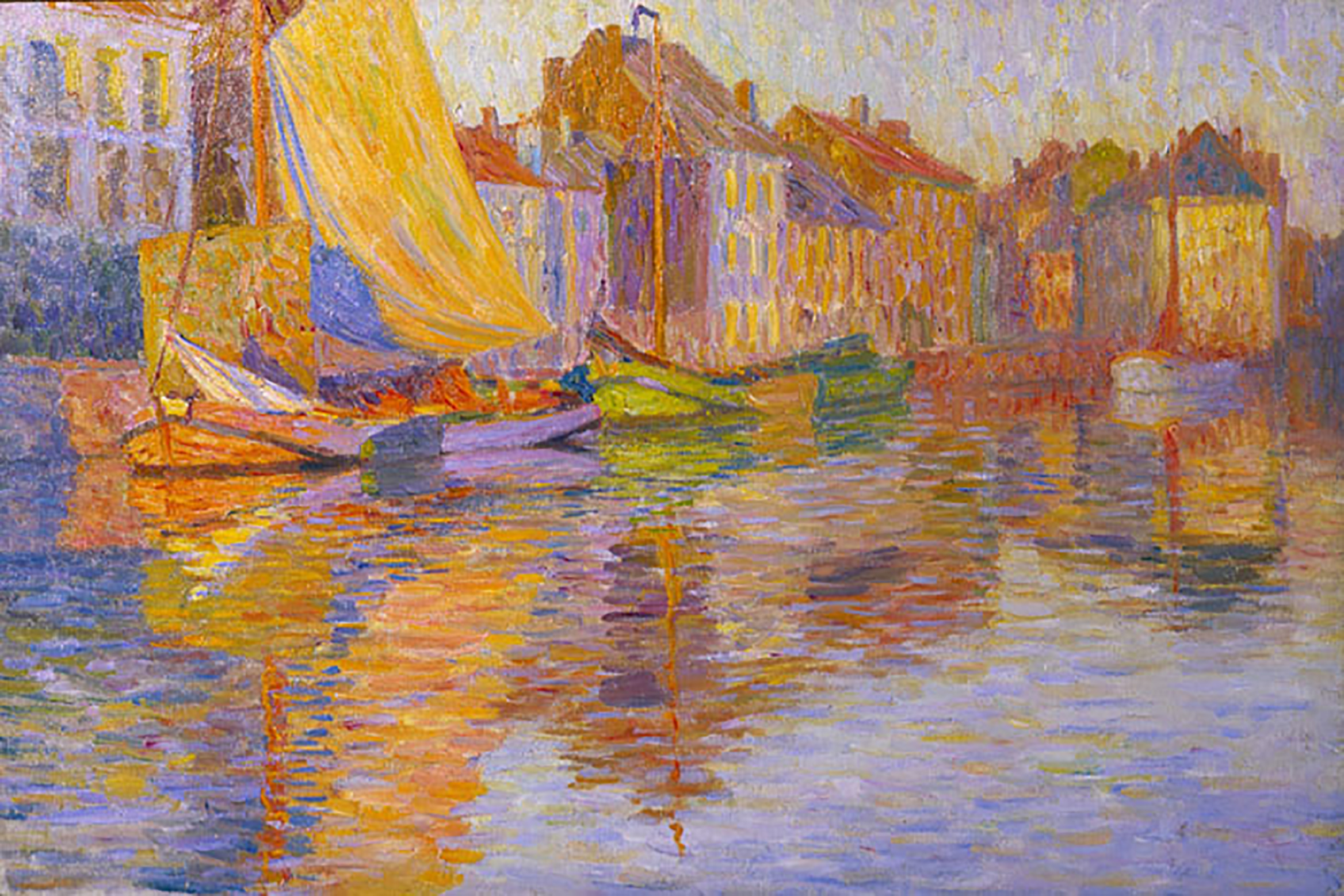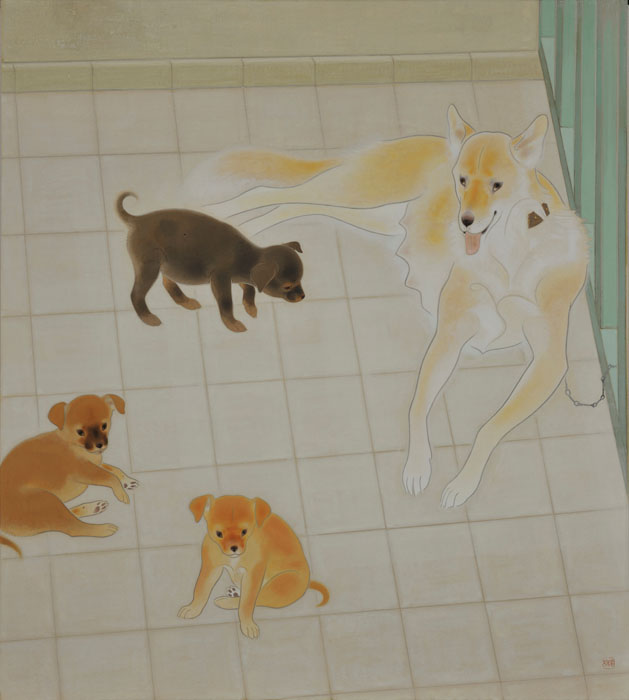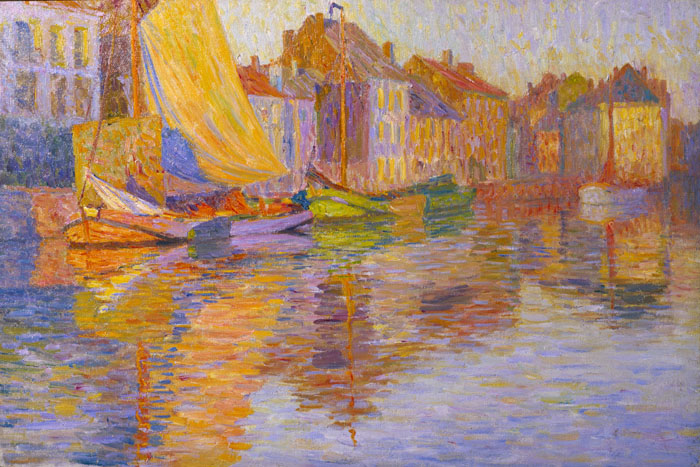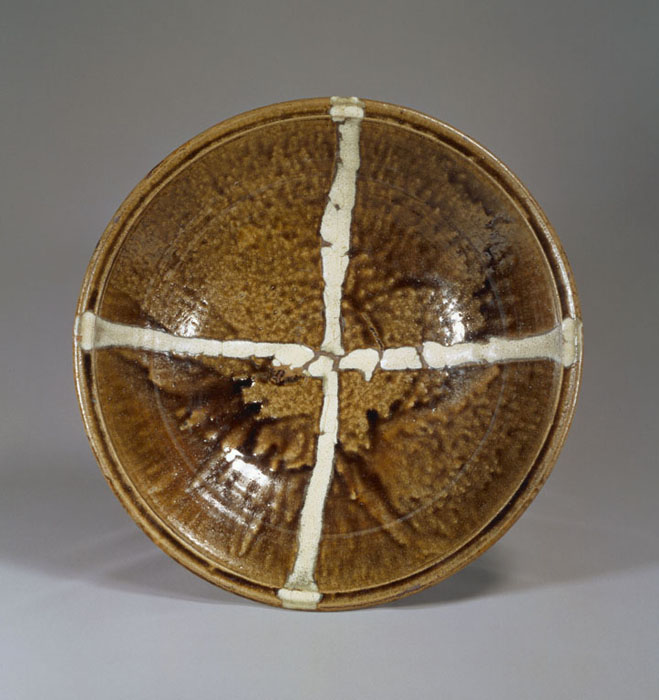
Collection Gallery
3rd Collection Gallery Exhibition 2018–2019
2018.08.04 sat. - 10.08 mon.
Special Feature : Yamaguchi Kayo (until 8.26) YAMAGUCHI, Kayo, Basking in the Sun, 1949
Yamaguchi Kayo was born in Kyoto in 1899 into an artistic family, with a father who was an outstanding Yuzen dyeing artisan and a brother who also became a Nihonga (Japanese-style) painter. He was fond of drawing from an early age, and in 1912 began studying under master animal painter Nishimura Goun. In 1916 he also enrolled in the painting department of Kyoto Municipal School of Painting, and went on to its graduate school. At school he studied not only traditional brush painting, but also pencil sketching under Yoga (Western-style) painter Ota Kijiro. Kayo also attended Takeuchi Seiho's private school Chikujokai on the advice of his main teacher Goun, who was weakened by illness. While Kayo was still a student, his work was first accepted at the 10th Bunten (Ministry of Education Arts Exhibition), and although at one point it was rejected by the Kokuga Sosaku Kyokai (the Society for Creation of a National Painting Style), in 1927 and 1928 it was shown in the Teiten (Imperial Fine Arts Exhibition) for two consecutive years, and from then on he showed work mainly in official, state-sponsored art exhibitions. Kayo incorporated his knowledge of modern Western painting, and innovations in Nihonga, into the traditions of Maruyama-Shijo School life drawing he had learned from his teachers Goun and Seiho, producing modern paintings in the bird-and-flower genre, and animal paintings with modernist compositions of which Black Panthers is a classic example. Meanwhile, he was also devoted to nurturing a younger generation of painters, starting to teach at his alma mater in 1922 and leading the Shinchosha art school after the 1928 death of its master Goun, and received the 1980 Order of Cultural Merit for his artistic and educational achievements. In this section we present two paintings donated by the artist's family in 2016 along with sketches and studies showing the process leading up to their production, as well as a number of bequests, entrustments and acquisitions, including sketches of the tropics from 1943 when he was dispatched overseas by the Ministry of the Navy to document the war effort.
Water, Waterside, and Reflections OTA, Kijiro, Town by the Shore, 1908-1913
Concurrently with the exhibition "Higashiyama Kaii- Retrospective", we present works depicting scenes of water and the water's edge.
Claude Monet and other 19th-century French Impressionist painters sought to capture nature as it changed from moment to moment under the sunlight. The surfaces of water, with light and color continually changing over time, provided an ideal subject for them and inspired a wide range of experiments. These include compositions featuring the vertical symmetry of landscapes and their reflections in water, fine brushstrokes evoking ripples on the surface, and other endeavors by painters and photographers to convey water in various states.
In addition to realistic depictions, this section includes abstracted images of water or the waterside. Composition by Piet Mondrian consists of a combination of short horizontal lines and vertical lines, creating a simplified black crosshair structure, part of a series depicting piers and seascapes. In this work, by expressing natural forms with geometric elements, Mondrian manifests the undulations of water and underlying order of nature invisible to the eye. Domoto Hisao, a leader in postwar Japanese Art Informel, in his later years depicted ponds with water lilies, as in Monet's Water Lilies series, rendering reflections of light on the water with a fresh touch. Perhaps reflections on water are an inherently appealing phenomenon for artists of every era.
Artists of the Mingei Movement HAMADA, Shoji, Large Bowl, Cross in White, Brown Ash Glaze, 1955
The Mingei (lit. "Folk Art") movement played a central role in the development of modern Japanese crafts, and continues to exert a strong influence today, for example with recent reassessments of the value of art rooted in everyday life. The movement was characterized by recognition of a robust beauty in miscellaneous everyday articles (vernacular crafts) made by anonymous artisans, and by turning vernacular crafts' qualities into an artistic vocabulary, the participants set forth a set of aesthetic values distinct from that of modern Fine Art. Key members included philosopher Yanagi Soetsu and ceramicists Kawai Kanjiro and Hamada Shoji. They published the Prospectus for the Establishment of the Japan Folk Art Museum in 1926, which was also co-authored by modern crafts pioneer Tomimoto Kenkichi. The British ceramicist Bernard Leach also had a significant influence on formation of the Mingei philosophy. The artists involved in this movement established their own aesthetic sensibilities by deepening their understanding of the artist's individuality and creative freedom, as seen in modern Western art, while contextualizing this in opposition to the works of anonymous artisans. The Mingei movement attracted many sympathizers, such as woodworker Kuroda Tatsuaki and stencil-dyeing textile designer Serizawa Keisuke, who later became some of Japan's most renowned artisans. Kuroda and Aota Goro were also members of the Kamigamo Mingei Guild, formed in 1927. Modeled on medieval European guilds, this group was an experimental Mingei workshop that sought to create new models for lifestyles and art through communal living and collaborative work. It ended up disbanding after only two years, but experiences such as these served to nurture Mingei movement members thereafter, as they went on to achieve great things as individual artists.
Exhibition Period
2018.08.04 sat. - 10.08 mon.
Themes of Exhibition
Special Feature : Yamaguchi Kayo (until 8.26)
Water, Waterside, and Reflections
Artists of the Mingei Movement
[Outside] Outdoor Sculptures
List of Works
3rd Collection Gallery Exhibition 2018–2019 (57 works)(PDF)
Free Audio Guide App
How to use Free Audio Guide (PDF)
Free Audio Guide App How to use Free Audio Guide (PDF)





